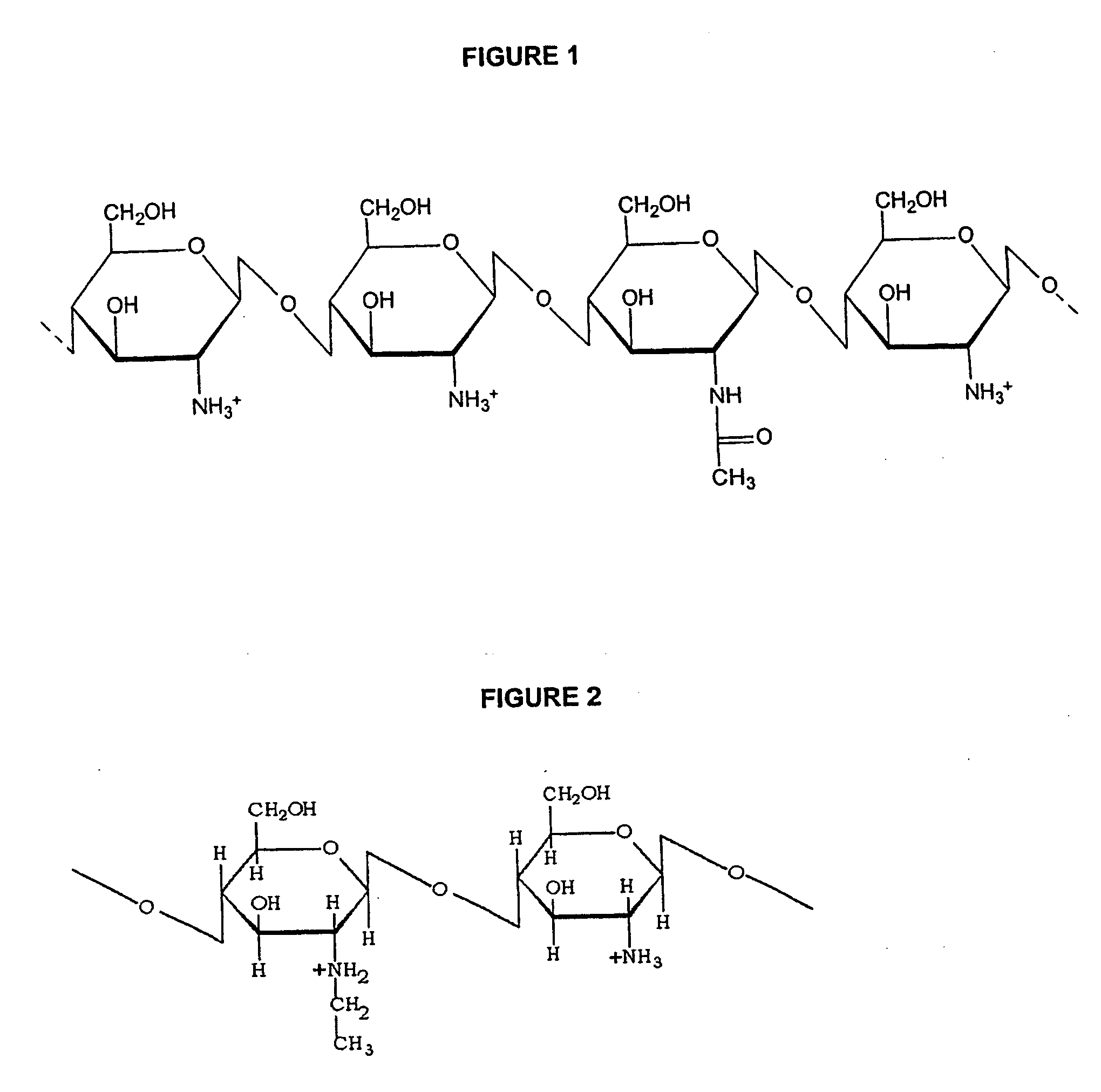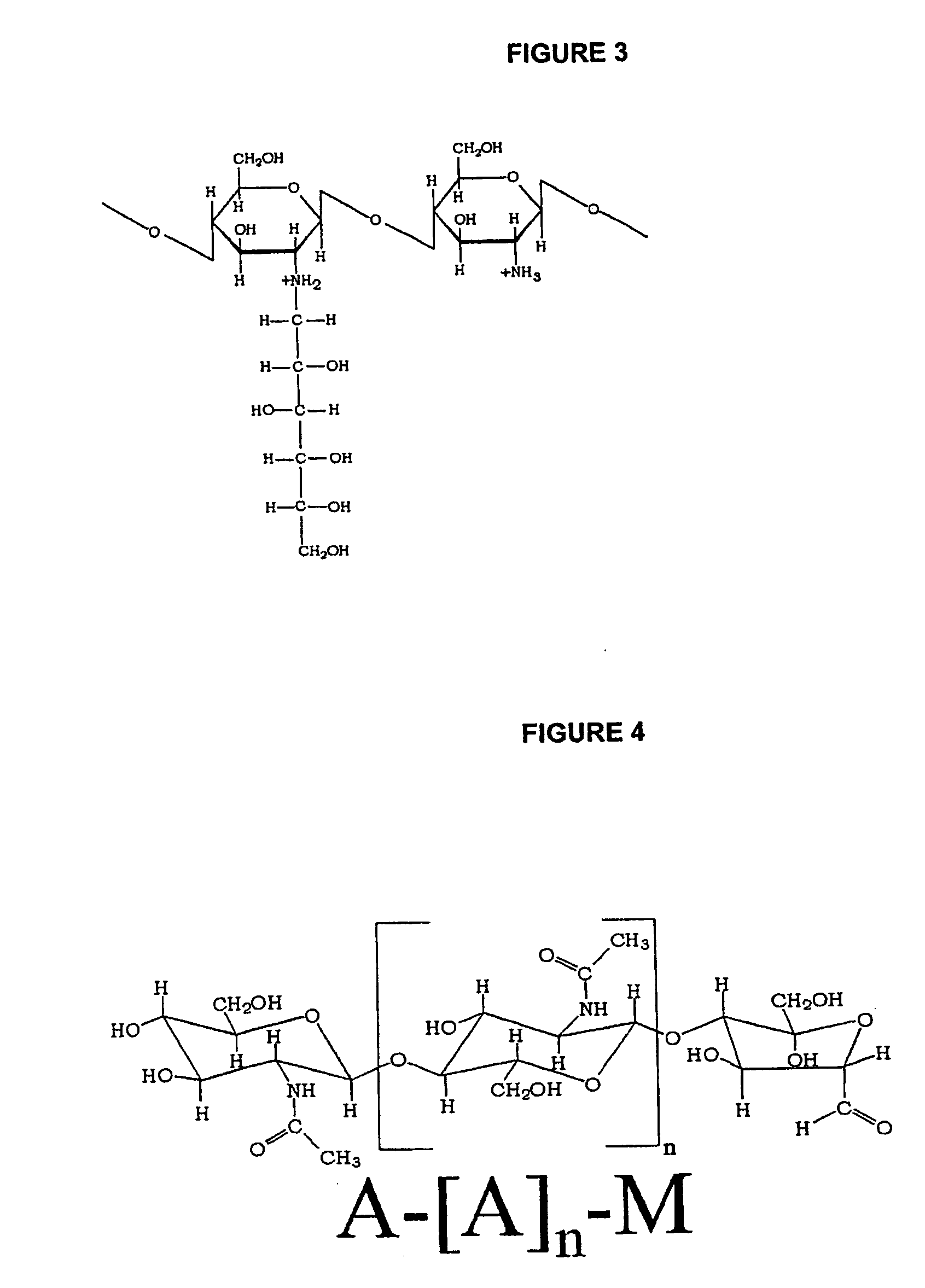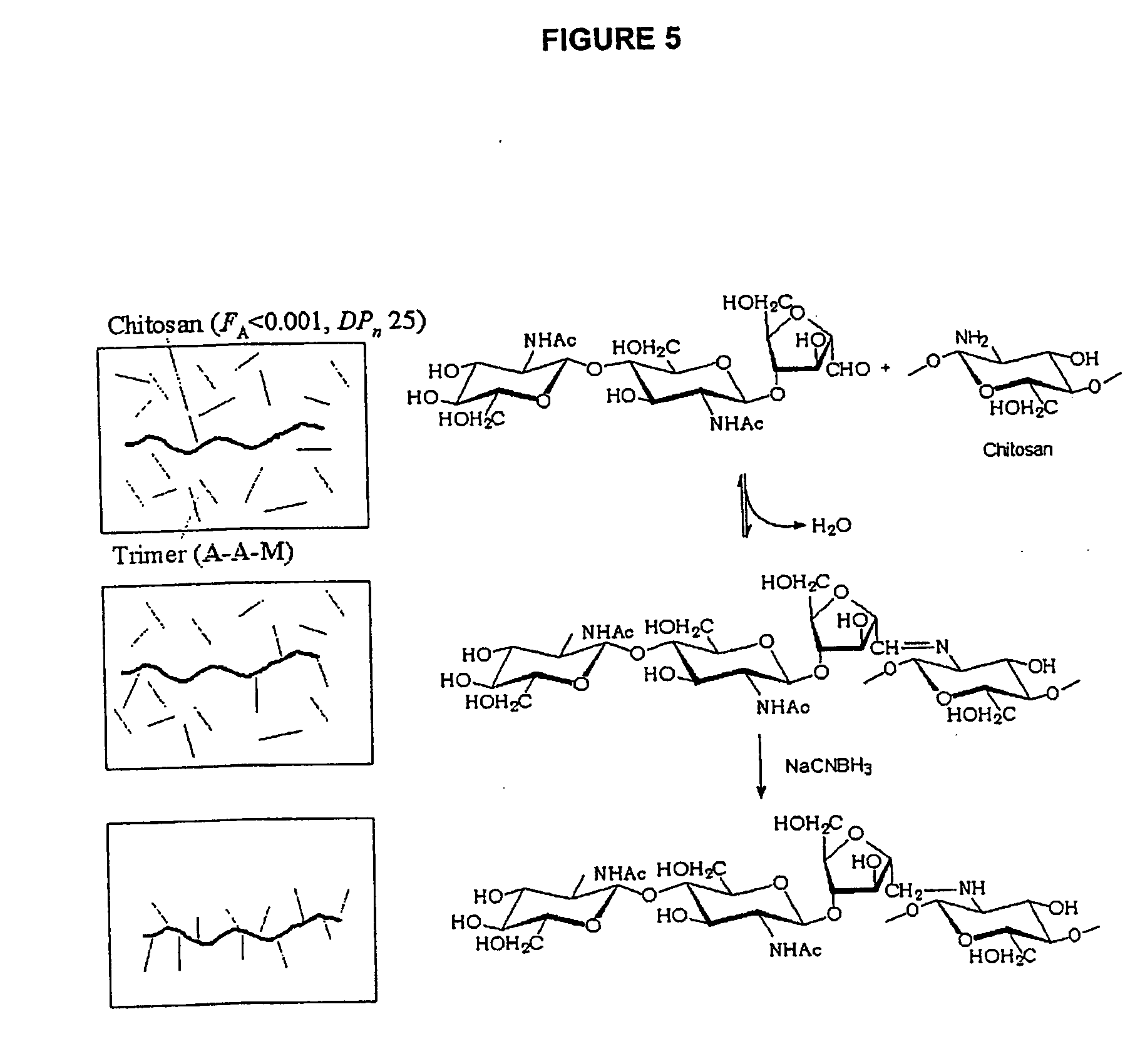Non-viral gene delivery system
- Summary
- Abstract
- Description
- Claims
- Application Information
AI Technical Summary
Benefits of technology
Problems solved by technology
Method used
Image
Examples
example 1
Preparation of Fully de-N-acetylated Chitosan (FA<0.01)
[0069] Commercially available chitosan with FA of 1.0 (10 g) was further de-N-acetylated by heterogeneous alkaline deacetylation (50% (w / w) NaOH solution for 4 hours at 100° C. in an airtight glass-container). The chitosan was filtered and washed with 2×150 mL of methanol and 1×150 mL of methyl ether before drying over night at room temperature, followed by subsequent dialysis against 0.2 M NaCl and deionised water. 1H NMR spectroscopy showed that FA<0.01.
example 2
Depolymerisation of Fully de-N-acetylated Chitosan (DPn=25)
[0070] Chitosan (FA2) as described by Allan and Peyron (1989, 1995a,b), followed by conventional reduction by NaBH4, dialysis and lyophilisation. The chitosan was found to be fully reduced and the average number degree of polymerisation (DPn) was determined to 25 by 1H and 13C NMR spectroscopy.
example 3
Preparation of N-acetylated Oligomers with a Reactive Reducing End
[0071] Chitosan (FA=0.59, intrinsic viscosity [η]=826 mL / g, 500 mg, HCl form) was dissolved in 30 mL 2.5% v / v acetic acid. Dissolved oxygen was removed by bubbling nitrogen gas through the solution for 5 minutes. After cooling to 4° C., a freshly prepared solution of NaNO2 (100 mg) was added, and the reaction was allowed to proceed for 12 hours at 4° C. in darkness. The product was centrifuged (10 minutes, 5000 rpm) and filtrated (8 μm), to remove the insoluble fractions of fully N-acetylated oligomers before lyophilisation.
PUM
| Property | Measurement | Unit |
|---|---|---|
| Fraction | aaaaa | aaaaa |
| Fraction | aaaaa | aaaaa |
| Fraction | aaaaa | aaaaa |
Abstract
Description
Claims
Application Information
 Login to View More
Login to View More - R&D Engineer
- R&D Manager
- IP Professional
- Industry Leading Data Capabilities
- Powerful AI technology
- Patent DNA Extraction
Browse by: Latest US Patents, China's latest patents, Technical Efficacy Thesaurus, Application Domain, Technology Topic, Popular Technical Reports.
© 2024 PatSnap. All rights reserved.Legal|Privacy policy|Modern Slavery Act Transparency Statement|Sitemap|About US| Contact US: help@patsnap.com










